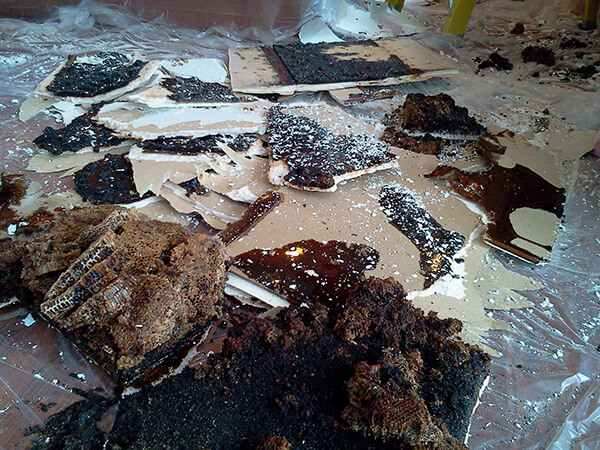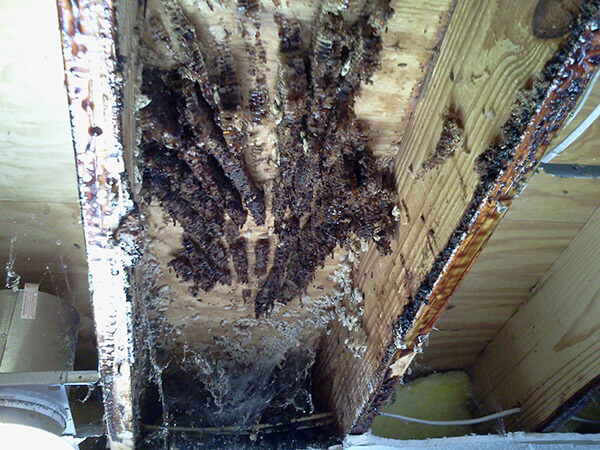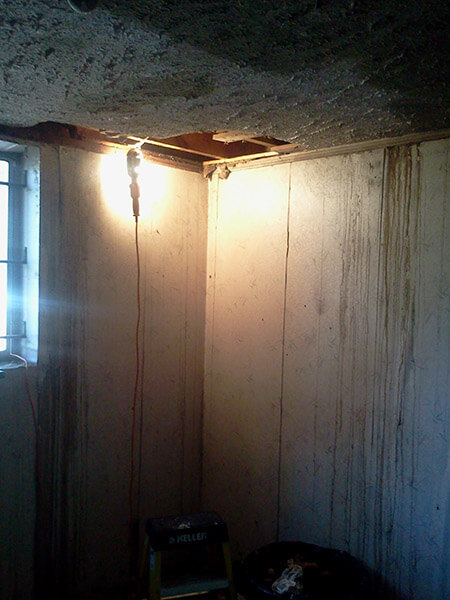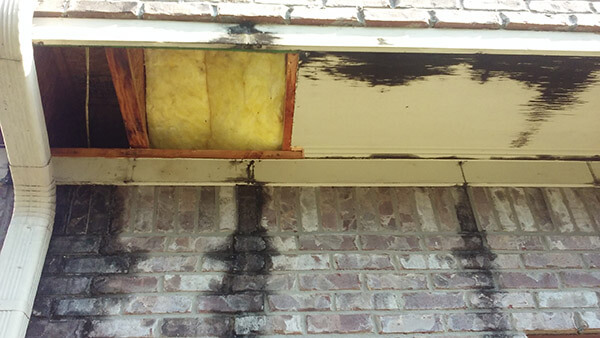What I am going to share with you is undoubtedly where I see the biggest expense and fail rate among honey bee removals jobs. If you are dealing with an ongoing bee bee problem, it could be because of one of these two reasons.
-
Mistake #1: Killing the bees but not removing the entire of the nest. Honey, pollen, and bee larva is left in the structure.
Did you know, a healthy living honey bee colony is unlikely to damage your home. It is when the bees die and leave the honey unprotected that damage can start. Let's say, for example, a pest control company treats the area and is successful at killing the bees. The problem looks like it is fixed. Everything seems great and the bees are gone. Until a few weeks or even several months later, when you start to notice a strange smell (fermenting honey) and then you see a sticky substance coming through your ceiling. And you realize, there must have been honey in that honey bee nest. Now the nest still needs to be removed and possibly an entire ceiling of drywall replaced.
Even if a honey bee nest is just starting out, it is best to assume there is honey in the nest. Honey bees are programmed to make honey. During a strong nectar flow, they can make enough honey in just a couple weeks to cause damge to your home if not rmeoved. A honey bee colony that is a year or more old is likely to have substantial honey stores. Imagine a five gallon bucket of honey being poured into the ceiling of your home and what kind of mess that could make. Quite often, by the time the bees are noticed, they have already been there for several weeks if not longer. It is not worth the risk. It is best to make sure that the honey, comb, and bees are all removed.
-
Mistake #2: Not sealing the bees’ entry point/old nest location properly.
Removing all the honey, wax, and bee larva is only half the battle. The area must be sealed tightly and properly to keep bees permanently out. Bees found the place the first time, and there is a high probability they will try to come back. Using steel wool and caulking all gaps in the area 1/8 inch or bigger is a huge move in the right direction. Expanding foam is okay to use, but tends to deteriorate over time. I would only recommend expanding foam as a temporary fix. Make sure to use high quality caulk and take your time so as to not miss any gaps. If done properly it should keep the bees out. Some houses need to be sealed all the way around if the gaps are bad enough. (When removing a colony of bees, Southeast Bee Removal always bee proofs it from the inside as well for double protection).
As long as you avoid the above two mistakes you are on your way to successfully taking care of the bee problem and keeping bees permanently out of your house!
Here are some examples of failed bee removals that Southeast Bee Removal was hired to fix.




In the above pictures, you can see the dark honey stains on the wall. Honey stains can be difficult to remove. The floor joists were fine, but a large section of the drywall ceiling had to be replaced as well as the soffit in the bottom picture.

